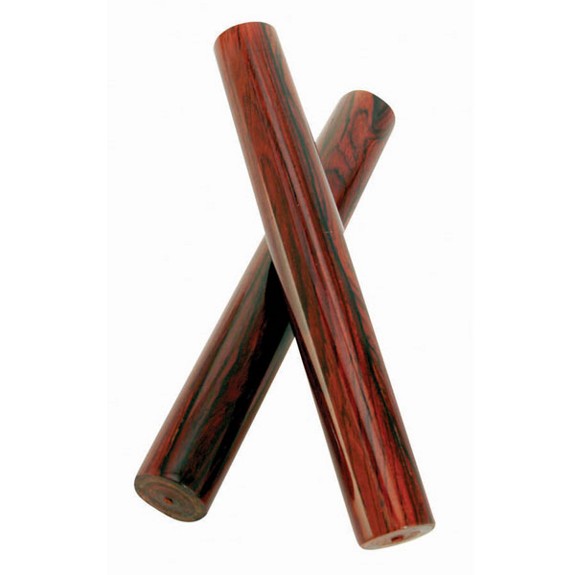It Begins with the Clave
The basis of many Latin American rhythms is the clave.
Originally, this meant two wooden sticks that play the basic rhythm in an ensemble. The rhythms themselves are now referred to as “claves”, for example there is a “son clave”, a “rhumba clave” and also a “bossa nova clave”.
Mastering these basic patterns is very helpful in order to be able to play the many rhythmic variations fluently. At the beginning it makes sense to learn a part of the “Bossa Nova Clave”, the Joao Gilberto Rhythm.

The Basic RHythm Notation and Practice
Joao Gilberto defined the sound of the bossa nova guitar. He plays a basic pattern on many of his recordings. The typical, flowing rhythm is created by numerous small variations.
Listen to Joao Gilberto playing the song Insensatez and try to follow the basic rhythm:
Here you can see the basic pattern. The rhythm is notated in the upper voice, the basic pulse in the lower voice, in this example in half notes.
Note: Bossa nova songs are often notated in 2/4 time with the root pulse in quarter notes. For an easier start, I chose the 4/4 time signature.

Practice this pattern by marking the basic pulse with your foot and clapping the rhythm of the upper voice.
The Application on the Guitar
On the guitar, the thumb of the right hand takes over the basic pulse and the index, middle and ring fingers pluck the rhythm on the high strings. Here is the basic pattern with open strings:

Once you an play the rhythm fluently in different tempos, you can apply it to different basic level chords. In this case, the thumb always plucks the root note, the fingers pluck the upper strings.
Watch this video as I play the version of “Insensatez” (How Insensitive) by Joao Gilberto arranged for solo guitar. Again, I use the bossa nova basic rhythm in the introduction.
Bossa Nova Rhythm and Chords
Once you’re comfortable with the rhythm, it’s time to apply it to one or more chords. The example below is an easy exercise for playing the rhythm on two alternating chords.



As seen in the picture, the A minor 7th is changed to an E minor 9th chord by moving it up two frets. The fingers now pluck the D, G and B strings while the thumb plays the bass note on the A string. With these chords and the rhythm you already have a nice intro for a song. If you want to apply this rhythm to a complete song, I suggest you continue with The First Song: Besame Mucho.
If you feel ready to expand your knowledge about Brazilian rhythm patterns you might want to read about Syncopation and Off-Beat-Phrasing and learn the famous Partido Alto rhythtm pattern.